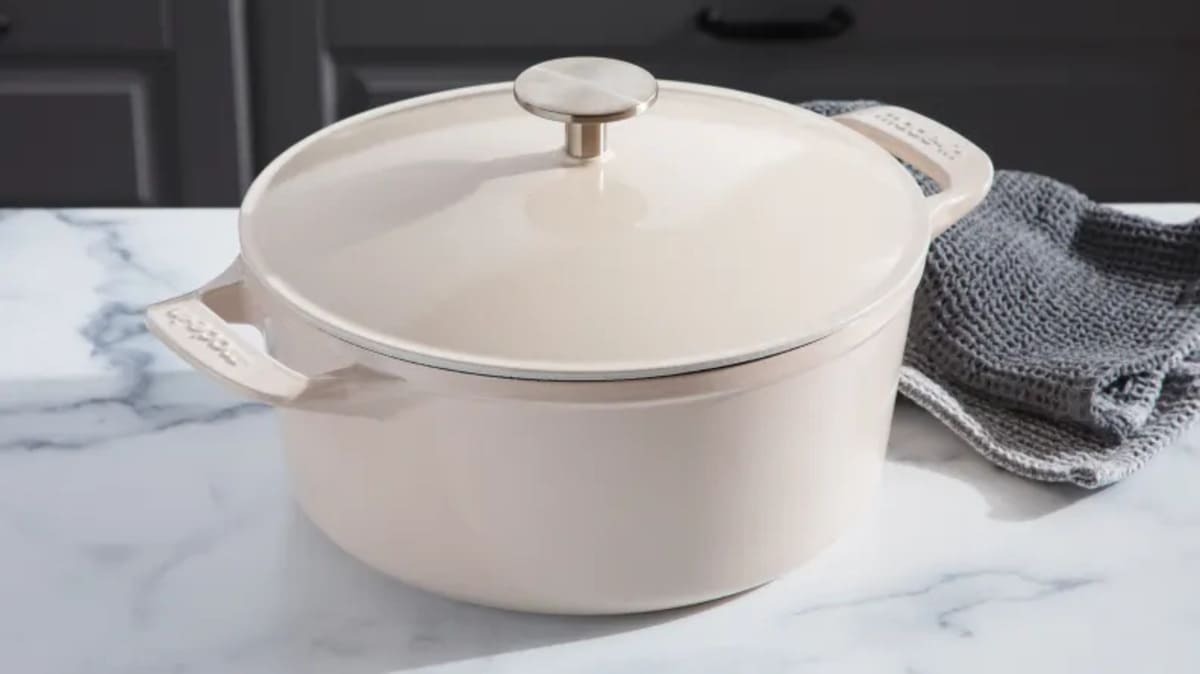
A Dutch oven is the true workhorse of any kitchen. These bad boys can make pots of soup or stew, sauté vegetables, braise meat, and even bake a loaf of crusty bread. If your kitchen only has room for one large pot, it should be a Dutch oven. But how do you choose which one? Not only do they range in price from $80 to $420, they range in quality too.
While most of them follow the same basic design—a deep, cast iron pot coated in nonstick enamel—the shape and construction make a huge difference in cooking experience. That’s why we tested the top Dutch ovens on the market. And, after putting each through its paces, concluded that the Made In Dutch Oven (available at Made In) is the one we want in our kitchens and would recommend to friends. If you’re in the market for an affordable option, the Lodge 6-Quart Round Dutch Oven (available at Amazon) is our Best Value pick.
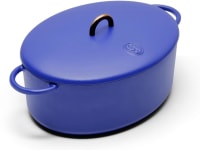
Great Jones Dutchess
The Great Jones 6.75-quart Dutch oven was the largest one we tested, and one of two in an oval shape (as opposed to a round). The main issue we ran into was precisely due to this—since most stovetops are circular, we found this pot to heat less evenly than the others, resulting in oddly cooked chicken and sourdough bread.
It also lacked a few key features we found useful in the other models, namely the self-basting divots, and a smoothly sealing lid. Whether it was due to the textured, matte finish of the entire pot’s outside or just a function of the pot’s grooves, the lid would make a particularly grating sound when slid on to cover the pot. Buy here
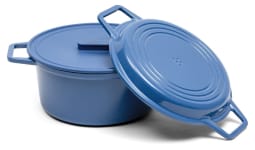
Misen Dutch Oven
The Misen Dutch oven is designed quite cleverly with a lid that doubles as a grill pan. This proved useful to sear chicken for a crisp skin before transferring it into the pot to fully roast. However, the lid also detracted from the overall score because it didn’t fit as tightly as others and made handling the pot more awkward. This was most annoying in scenarios like baking bread, where the pot is heated to 500°F so you want to be extra careful when handling.
The pot also comes with a silicone “universal lid” which is helpful in many scenarios, especially since it’s also self-basting, but is less convenient to remove since it hugs the pot so tightly (watch out for escaping steam). Click here to buy
How We Tested Dutch Ovens
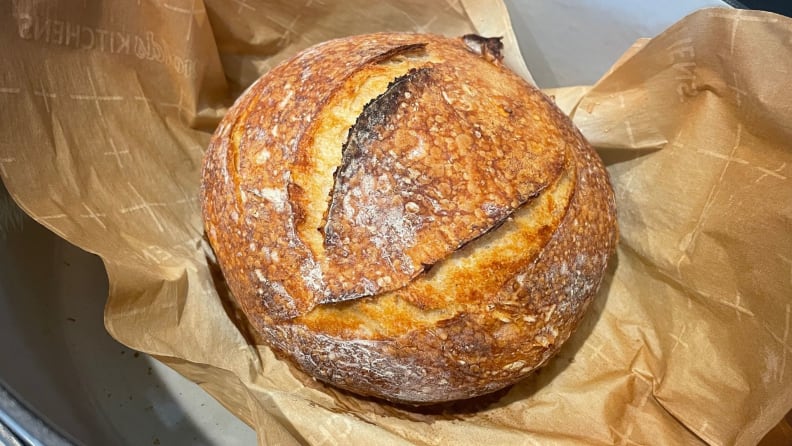
The Tests
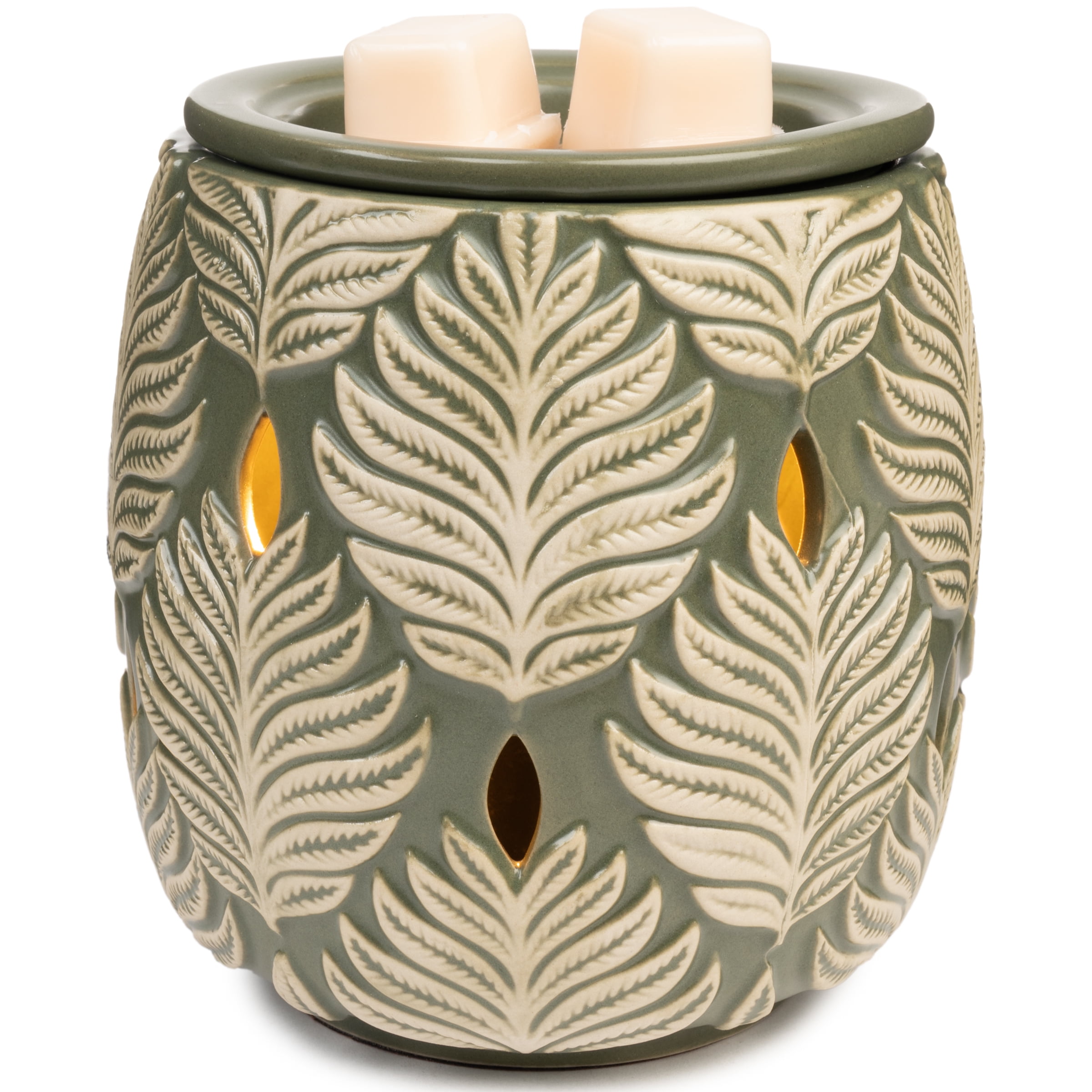
Better Homes & Gardens Full Size Wax Warmer, Fern
No flame or soot residue Gentle light adds a touch of ambiance Safe and clean heat source Easy clean up Great for any

Card title
Some quick example text to build on the card title and make up the bulk of the card’s content.
great deal. We were also curious to find out if a higher price tag really did make for a better Dutch oven.
We tested Dutch ovens that seemed to be highly rated everywhere, some newer models from direct-to-consumer brands, and a few less expensive options that walked the line between a great product and a
Our three tests for each Dutch oven tested its versatility for different cooking applications. First, a classic pho broth to see how deeply flavors would develop inside the pot. Second, a roasted chicken on a bed of mirepoix, assessing if the Dutch oven could appropriately cook both chicken and vegetables at the same time. And finally, a loaf of sourdough bread to test the heat retention of the pot as the bread springs from the initial burst of heat.
We took note of how easy it was to move each one, how well the ingredients fit, how each dish turned out, whether it was a pain to clean, how it fit on the stovetop, and how easy it was to store.
What You Should Know About Dutch Ovens
If you like to cook, a good Dutch oven is an essential tool for your kitchen. It’s usually made from seasoned cast-iron or ceramic, has thick walls, and includes a tight-fitting lid. These pots are excellent for browning meat and even better for making soups and stews or any recipes that require slow cooking because they distribute heat evenly during cooking. Dutch ovens can also tolerate high temperatures, so they can also be used for deep-frying, too.
Dutch ovens can be used on your stovetop and are oven-safe, but make sure it’s been seasoned before its first use. Keep in mind these pots are hefty, so be careful when handling these while they’re filled with hot food. Always look for a Dutch oven with large handles for easy maneuvering. Investing in a Dutch oven is well worth your money, as most—especially cast-iron Dutch ovens—are built to last forever.
What Cooks Best in a Dutch Oven
Dutch ovens are extremely versatile and can be used for everything from soup to sourdough. A Dutch oven is also excellent for cooking meat, vegetable, or seafood stews. The versatility of a Dutch oven goes beyond your kitchen, as there are some cast-iron models that can be hung over a campfire for outdoor cooking.
How to Choose the Right Size Dutch Oven
Because Dutch ovens are bulky, choosing the right size for your kitchen can be difficult. Dutch ovens range in size from 1/4 of a quart to 13 quarts. To decide which to buy, consider how many people you’re cooking for.
For one or two people, a 3- to 4-quart Dutch oven will usually do the trick. A household of four will want a 5- to 7-quart Dutch oven, which is the usual size range. If you’re cooking for a large family, a party, or a holiday meal, you may want to consider a Dutch oven larger than 7 quarts, just don’t forget to make sure it fits in your oven!
Ceramic or Cast-Iron?

Better Homes & Gardens Full Size Wax Warmer, Fern
No flame or soot residue Gentle light adds a touch of ambiance Safe and clean heat source Easy clean up Great for any
There are benefits and drawbacks to both cast-iron and ceramic Dutch ovens. Cast-iron without an enamel coating can become rusty after repeated use. Enamel finishes on Dutch ovens will help keep them clean and rust-free.
Ceramic Dutch ovens are more visually pleasing but are prone to nicks and cracks with heavy use. Even the most thorough scrubbing won’t return your ceramic model to its original condition once it has become stained. However, the staining won’t affect its ability to cook your food.





